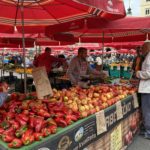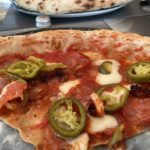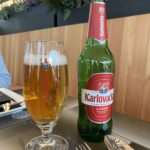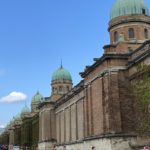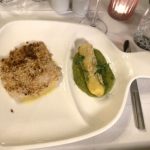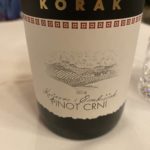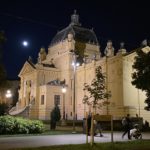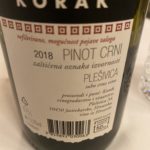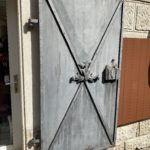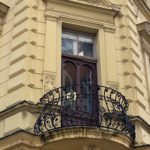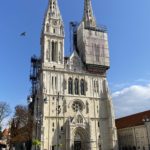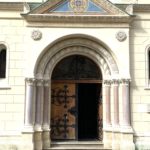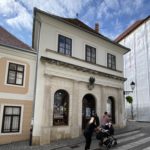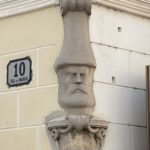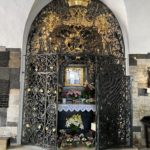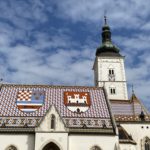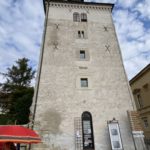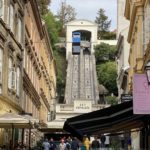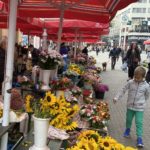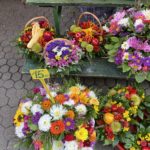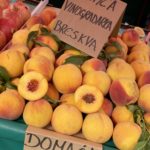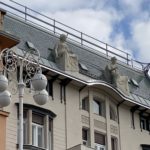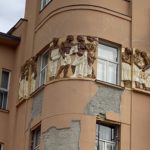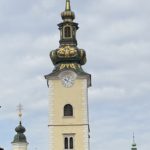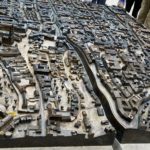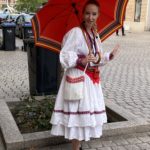
http://partnershipforcoastalwatersheds.org/is_5 Inez our Zagreb tour guide in her traditional costume
São Sebastião do Passé We met our expert local guide this morning for a tour of Zagreb to view the city’s impressive landmarks. Inez was dressed in traditional Croatian garb and carrying a traditional Croatian umbrella making her easy to pick out in a crowd. The earthquake in December 2020 resulted in significant damage to many of the historic buildings, which made them unsafe and unsuitable for visiting. Others, the CoVid pandemic has had an adverse impact and have not reopened or are now open limited hours.
Croatia’s population is about 4 million and almost 25% of the residents live in Zagreb making it the political, economic, and cultural center of the country. Modern Zagreb is the result of a merger between two Medieval communities sited on adjacent hilltops. The western settlement was inhabited by townspeople and merchants; the eastern was dominated by priests and religious orders. It was part of the Hapsburg Empire from the 16th century. Growth exploded in the 19th century when elegant public buildings gave the city center an Austrian appearance.
During our walking tour, we saw a vivacious open-air city with colorful markets, sidewalk cafes, and green parks with fountains. We saw the Croatian National Theater and Opera House, Croatian Parliament, Prime Minister’s office, St. Mark’s Square with its church roof of colorful tiles, the Old City, the Stone Gate (the last remaining gate of 5 that separated the two Medieval towns), and Zagreb Cathedral (Cathedral of the Assumption of the Blessed Virgin Mary, which was so severely damaged in the earthquake visitors are not permitted to enter – in fact the spire on top of the right tower is now on the ground).
We visited the bustling Dolac Market the largest in the nation where locals from the countryside come to sell locally-grown and produced fruits, vegetables, honey, oils, handicrafts, and more.
We learned that Croatia likes to take credit for the invention of ties (KRAVATA) during the Thirty Years War, when wives, sisters, girlfriends would tie a red scarf around the neck of soldiers heading off to war for good luck. Souvenir shops here sell all sorts of ties!
We broke from the group after the walking tour and strolled the flower market square, several streets with dining establishments and coffee shops. We picked Al Dente, for lunch and tried another local beer, Karlovacko. Mike and I shared a picante pizza.
After lunch, we took advantage of Stefan’s transportation tickets, rode the bus out to Mirogoj Cemetery, at the foot of Mount Medvednica. It was built in 1876 by Hermann Bolle, covers 7 acres. The imposing facade contains the entrance to the Catholic and Orthodox chapels and an arcade where notable families are buried. The structure was off limits, damaged by the earthquake and somewhat unstable. Portions of the stone cornice and exterior decorations were on the ground. Many of the monuments and tombstones were also damaged and are in the process of being replaced or repaired. We discovered that a lot of the stones were engraved with Obitelj and another name. Our original thought was that all these folks were related, but then Kimberly Baker found out the word means FAMILY.
We hopped the bus back to town and then walked through the series of parks from town center to our hotel.
We ate dinner at Vinodol, noted for its traditional Croatian dishes. It was on Nikole Tesle Street! sound familiar? We started off with a bottle of local red wine; Kimberly enjoyed a bowl of corn chowder topped with jalapenoes. Â Kimberly and I had almond encrusted trout filets from the Gacka River in central Croatia accompanied by a potato roll on a green pea puree. Mike had lamb shank and Glenn had pork. The moon was shining brightly as we walked back to the hotel.

